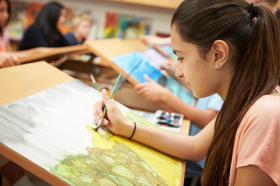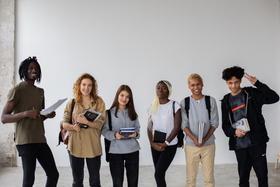While sports have always been a staple in public schools, many students are taking advantage of non-athletic opportunities, such as academic sports. Both athletes and non-athlete students are discovering that the latest public school clubs are not only building students’ profiles for college applications, but they’re also providing rare opportunities for travel, competitions, awards, and even college scholarships!
Academic Clubs
An academic club is essentially any school-approved group of students, often with a faculty sponsor, who meet to develop activities or discussions based on their particular topic of interest. Group meetings are often informal, and can even involve after-school field trips, community volunteerism opportunities, or other venues. The intent of an academic club is to generate enthusiasm for a topic while encouraging student involvement and achievement.
While in the past, most academic clubs were based on school subjects, such as the book club, the math club, or the science club, public schools today have a much greater scope in clubs – and even geared towards gifted students. For example, springing up around campuses are “Robotics Clubs,” where students actually design a robot and compete in competitions. Another forum for clubs is technology-based, where “Gaming Clubs,” “Computer Design Clubs,” or “Web Clubs,” have grown in popularity; students not only learn about how the technology works, but they’re also able to have some fun, as they learn to design their own personal or professional web pages or computer-based games.
This video offers suggestions for school club activities.
How to Start a Club
While schools today have anywhere from few clubs to literally hundreds, students have the freedom to propose new club ideas to their school leaders. While each public school certainly has different club requirements, students can meet with a counselor or advisor to learn about the paperwork, forms of approval, and necessary steps to starting their own club.
Clubs Across the Country
As each school is uniquely different, there many clubs across the country that have gained serious recognition. Students and parents can check to see if these clubs are available at their local school—and, if they’re not, students can always work towards creating their own version of the club to foster student involvement!
The Travel Club
For students aching to stretch their sights beyond the walls of a classroom, many high schools are offering travel clubs, where students can journey to nearby sights or even tours abroad. Ludlow High School, in Ludlow Kentucky, is one high school that provides students with the opportunity to get together with peers and learn more about other areas.
As the Ludlow explains, “Travel Club is our way of exploring the world outside of Ludlow. We are an extracurricular club that ‘travels’ to different places.” While traveling offers a lot of independent opportunities, Ludlow’s Travel Club (and most other travel clubs at other public schools) require that a chaperone join the students in their explorations. Also, this particular academic club encourages positive behaviors, as potential club members must not have a recent suspension record or serious discipline issues, must meet academic eligibility, and may not have more than 3 unexcused absences or 5 tardies in an academic semester. With a few club and travel costs, students can either fundraise to cover the costs, or they can choose to pay from their own pockets.
Robotics Clubs and the FIRST Robotics Competition
Dean Kamen, an inventor, entrepreneur, and advocate for science and technology in schools wanted to share his passion with kids across the nation; as a result, he developed FIRST (For Inspiration and Recognition of Science and Technology). Providing students with an opportunity to compete in the FIRST Robotics Competition, robotics clubs across the country are bringing together students from varying backgrounds to design, build, and create their own robots.
As Kamen established the vision of FIRST, the program is intended to “create a world where science and technology are celebrated… where young people dream of becoming science and technology heroes.” For robotics clubs who are interested in competing in the competition, FIRST will send students and their mentor(s) a “kit of parts” and a set of rules. From here, “Teams build robots from the parts and enter them in competitions designed by Dean Kamen […] and a committee of engineers and other professionals.” While FIRST aims to inspire, engage, and encourage students of both middle and high school ages, this opportunity also “redefines winning for these students because they are rewarded for excellence in design, demonstrated team spirit, gracious professionalism and maturity, and the ability to overcome obstacles. Scoring the most points is a secondary goal. Winning means building partnerships that last.”
This video reports on a robotics club in a middle school.
Public Service and Volunteerism Clubs
For students who are interested to make a difference in their community, www.dosomething.org is a rising organization that allows students and other community members to get involved, get ideas for action, and stimulate clubs with success. As their site explains, “Do Something Clubs are a fun, free, and easy way for you to take action in your community and impact the causes that you're passionate about. The Clubs program launched 2 years ago and already has 163 clubs in 37 states and Canada.”
While the “Do Something” organization is not affiliated with public schools, students can easily utilize this online resource to come up with ideas, activities, and tips for their own community outreach clubs. Examples of clubs from the site include groups that have organized run/walk races to raise money for local causes, environmental and “go green” clubs, and even homeless shelter and mentoring/tutoring clubs. Also, the “Do Something” site provides information on potential grants that certain school clubs may be eligible for, which can provide students with both informational and fiduciary support.
This video offers suggestions on starting a club in your school.
Whether you want to save the earth or build robots, starting or joining a public school club is a great way to develop yourself personally, professionally, and academically.
Questions? Contact us on Facebook. @publicschoolreview














